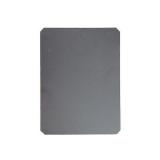

Leave a message



Sound diffraction is a major problem that affects the sound quality of speakers. The main cause of sound diffraction is actually the speaker cabinet itself. Since the sound of the unit is not only the front energy, but also the energy that expands in all directions, the corners next to the box are likely to cause the diffraction of the mid to high pitch. When the diffraction phenomenon is severe, interference may occur, which affects the high-frequency energy perception and reduces the image formation of the sound. How to reduce the sound diffraction? The most ideal way is to enlarge the front baffle as much as possible to reduce the sound diffraction, and because the invisible speaker is hidden in the wall, the wide wall just becomes the most ideal front baffle.
As the invisible speaker enters the wall, it can solve another factor that affects the sound quality: cabinet vibration. Vibration of the cabinet will cause sound staining of the speakers and affect the degree of sound reproduction. Traditional loudspeakers use various reinforcement measures in the box: such as wooden frame support and adding internal partitions; some advanced loudspeakers use metal as the box, hoping to use the weight of the metal to suppress the vibration of the box.
For invisible speakers, the wall is actually equivalent to its cabinet. As long as the wall has sufficient strength and thickness, theoretically, the vibration problem of the "box" can be easily solved, so as to achieve high-definition original sound reproduction, and the treble is more transparent, the midrange is fuller, and the bass is more shocking.

 【DSPPA Demo】PAVA8000 EN54 Voice Evacuation SystemNovember 12, 2020Abstract: DSPPA PAVA8000 EN54 Voice Evacuation SystemToday, we are gonna show you a demo about our PAVA8000 EN54 Voice Evacuation System.PAVA8000EN54 Voice Evacuation System can not only support manua...view
【DSPPA Demo】PAVA8000 EN54 Voice Evacuation SystemNovember 12, 2020Abstract: DSPPA PAVA8000 EN54 Voice Evacuation SystemToday, we are gonna show you a demo about our PAVA8000 EN54 Voice Evacuation System.PAVA8000EN54 Voice Evacuation System can not only support manua...view The National Standard Approval Meeting held in BeijingJuly 19, 2019The National Standard Approval Meeting held in BeijingThe approval meeting of the National StandardTechnical standard of public address system engineeringis held in Beijing on July 16, 2019. Xue Chang...view
The National Standard Approval Meeting held in BeijingJuly 19, 2019The National Standard Approval Meeting held in BeijingThe approval meeting of the National StandardTechnical standard of public address system engineeringis held in Beijing on July 16, 2019. Xue Chang...view


